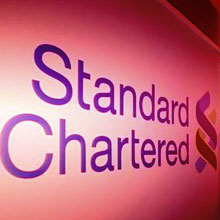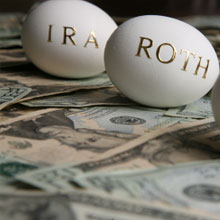
At last week’s Investment U Conference in San Diego, I made the case (again) for my favorite Asian growth proxy bank: Standard Chartered (OTC: SCBFF.PK).
Life is full of tests.
When I was first approached to write my Global Gambits column for Forbes Asia, the publisher first suggested a test. Would I put together a column on why a bank can be a great proxy for economic growth in a country or region?
My argument was that big banks have deep and broad tentacles in an economy through making loans, taking deposits and providing all sorts of financial services that lubricate the engines of capitalism.
Their performance does indeed tend to reflect the overall health of the economy.
Banks are also a conservative way to play this growth since, if they’re managed conservatively, they tend not to go overboard and manage risk pretty well.
Emerging markets, particularly in Asia, have been rebounding nicely so far this year after a lackluster 2011. If you’re still gun-shy, consider the conservative strategy of investing in quality financial and banking stocks.
This approach offers several advantages.
First, many Asian financial institutions are in a relatively healthy capital position since they’re richly funded by deposits from conservative savers.
Second, Asian banks are well positioned to penetrate untapped markets with an emphasis on consumer outreach and education. Mortgages, credit cards and auto loans are becoming more popular among the three billion Asian consumers who are the backbone of a rising global middle class. As these urban consumers spend more, there’s likely to be an increase in demand for financial products.
Every day, approximately 180,000 people in developing countries move from the countryside to cities such as Shanghai, Jakarta and Johannesburg.
And 75 million people from emerging markets join the global middle class every year. Some estimate that by 2030, more than 90% of the world’s middle-class consumers will reside in developing nations. The opportunity for financial companies to service these new customers is both clear and compelling.
This is coupled with the extremely low level of penetration of financial products and services into Asian households. For example, Andrew Frost, of Matthews Asia Funds, notes that only five years ago medium- and long-term mortgages didn’t exist in Asia (excluding Japan). In addition, Asia’s emerging market capital markets are also extremely underdeveloped.
At last week’s Investment U Conference in San Diego, I made the case (again) for my favorite Asian growth proxy bank: Standard Chartered (OTC: SCBFF.PK).
This hidden gem was founded in 1859 in Hong Kong, but is actually headquartered in London. With over half a trillion dollars in assets, this bank packs a punch well above its weight.
While Standard Chartered is active in more than 70 countries, the bulk of its revenue and profits comes from emerging Asia, and 20% of revenue comes from Hong Kong and Singapore alone. India and Southeast Asia are also key growth markets. In 2011, its 10.2% revenue growth was well balanced, with consumer markets up 12%, conservative and steady trade finance up a robust 25%, and corporate banking up 9%.
I really like that consumer banking forms a solid core of earnings, with 40% of its retail income generated by deposits and related fees. This gives management the flexibility to adjust and to pass on higher interest rates – actually boosting profit margins.
The gold standard for banking stocks is delivering consistent performance. This is where Standard Chartered really shines – 10 consecutive years of up revenue, profits and dividends. The bank currently offers a solid 3.5% yield that’s paid semi-annually.
Finally, while Standard Chartered is always on the prowl for smaller banks to acquire in these high growth markets, it’s oftentimes talked about as a takeover target itself.
The stock has surged 38% since my October recommendation, but still trades at about 1.2 times book value and just a bit over 10 times 2012 earnings estimates. Take a small position now and accumulate on any weakness, but don’t forget to have a 15% sell stop in place in case markets move against us.
Good Investing,
Carl Delfeld

Article by Investment U
 Tradervox (Dublin) – The Head of Sovereign Ratings at Standard & Poor’s, Moritz Kraemer has indicated that Greece might require another debt restructuring that will include the bailout partners such as the IMF and the European governments. Kraemer went ahead to state that Greece bailout will have to include its official creditors again. This statement have come at a time when the new government bonds offered by the Greece government are performing adding to the speculation in the market that the debt crisis in Greece might be far from over.
Tradervox (Dublin) – The Head of Sovereign Ratings at Standard & Poor’s, Moritz Kraemer has indicated that Greece might require another debt restructuring that will include the bailout partners such as the IMF and the European governments. Kraemer went ahead to state that Greece bailout will have to include its official creditors again. This statement have come at a time when the new government bonds offered by the Greece government are performing adding to the speculation in the market that the debt crisis in Greece might be far from over. Tradervox (Dublin) – Euro continued its slide even during the US session and printed a fresh low of 1.3250. There is a downside pressure on the single currency as the GDP data from US came as expected which reveals GDP at the expected value of 3%. Euro is trading around 1.3260, down about 0.60% for the day.
Tradervox (Dublin) – Euro continued its slide even during the US session and printed a fresh low of 1.3250. There is a downside pressure on the single currency as the GDP data from US came as expected which reveals GDP at the expected value of 3%. Euro is trading around 1.3260, down about 0.60% for the day.



